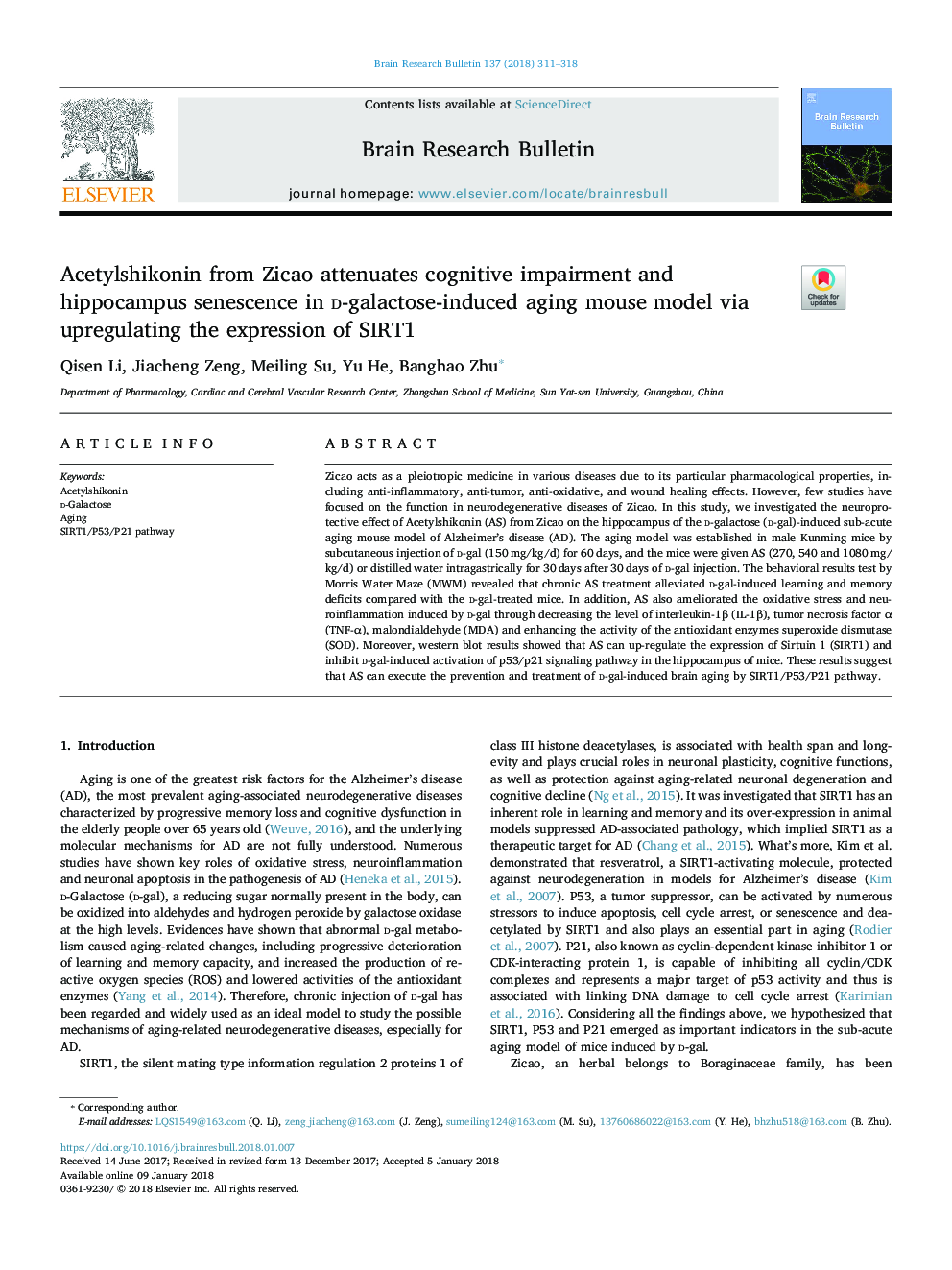| Article ID | Journal | Published Year | Pages | File Type |
|---|---|---|---|---|
| 8839030 | Brain Research Bulletin | 2018 | 8 Pages |
Abstract
Zicao acts as a pleiotropic medicine in various diseases due to its particular pharmacological properties, including anti-inflammatory, anti-tumor, anti-oxidative, and wound healing effects. However, few studies have focused on the function in neurodegenerative diseases of Zicao. In this study, we investigated the neuroprotective effect of Acetylshikonin (AS) from Zicao on the hippocampus of the d-galactose (d-gal)-induced sub-acute aging mouse model of Alzheimer's disease (AD). The aging model was established in male Kunming mice by subcutaneous injection of d-gal (150â¯mg/kg/d) for 60â¯days, and the mice were given AS (270, 540 and 1080â¯mg/kg/d) or distilled water intragastrically for 30â¯days after 30â¯days of d-gal injection. The behavioral results test by Morris Water Maze (MWM) revealed that chronic AS treatment alleviated d-gal-induced learning and memory deficits compared with the d-gal-treated mice. In addition, AS also ameliorated the oxidative stress and neuroinflammation induced by d-gal through decreasing the level of interleukin-1β (IL-1β), tumor necrosis factor α (TNF-α), malondialdehyde (MDA) and enhancing the activity of the antioxidant enzymes superoxide dismutase (SOD). Moreover, western blot results showed that AS can up-regulate the expression of Sirtuin 1 (SIRT1) and inhibit d-gal-induced activation of p53/p21 signaling pathway in the hippocampus of mice. These results suggest that AS can execute the prevention and treatment of d-gal-induced brain aging by SIRT1/P53/P21 pathway.
Keywords
Related Topics
Life Sciences
Neuroscience
Cellular and Molecular Neuroscience
Authors
Qisen Li, Jiacheng Zeng, Meiling Su, Yu He, Banghao Zhu,
